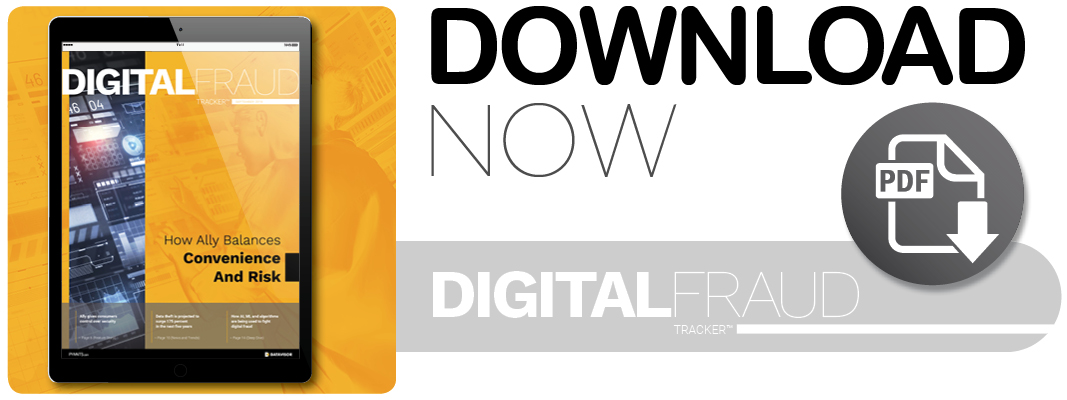How Ally Balances Convenience And Risk

For digital-only banks, offering convenience and maintaining top-notch security is a delicate balance. One technique, according to Anand Talwar, deposits executive for Ally Bank, is giving customers control over the tools protecting their data and money. In the Digital Fraud Tracker, PYMNTS explores how digital challengers are using AI, machine learning and algorithms, among other tech, to combat cybercrime without hindering user experiences.
The popularization and widespread adoption of digital and mobile banking tools have presented banks with plenty of new opportunities, but they’ve presented new risks as well.
Cybercriminals are finding new fraud opportunities as consumers turn to connected channels to manage their bank accounts. All told, 16.7 million Americans experienced fraud in 2017, and roughly 30 percent were notified of a data breach last year — a 12 percent increase over 2016 — as bad actors stole nearly $17 billion from unwitting victims.
Consumers expect companies to protect their personal information from fraudsters, but they don’t want that protection to come at the expense of convenience, according to Anand Talwar, deposits and consumer strategy executive for digital-only bank Ally.
“Balancing experience and risk is a massive challenge for us,” he told PYMNTS in a recent interview. “We want to provide the most seamless customer experience possible, and allow customers to interact with us and transact with us and use our product as freely as we can. But, obviously, there are negative forces out there that want to take advantage of customers.”
Many banks, including Ally, are now investing in emerging technologies to provide customers with a convenient, secure experience. Investments often include machine learning and AI tool development, both of which can automatically verify customer identities without disrupting transactions.
Ally’s investment has come to fruition in the form of its Deposit Risk Engine, designed to instantly analyze customer behavior and data to find patterns that indicate a transaction’s legitimacy. Transactions that do not match those patterns are flagged for further review.
“The customer doesn’t see any of that, but we’re using machine learning and AI to monitor anomalies in customer behavior and help tip us off if something suspicious is going on,” Talwar explained.
Getting Customers To Buy In
Offering customers a convenient, secure digital and mobile banking experience takes more than simply implementing new solutions and technology, however. Companies also need to ensure consumers are on board with the standards in place, or they risk making themselves even more vulnerable to fraud.
To that end, Ally unveiled Ally Card Controls, a mobile application enabling consumers to adjust security settings to their preferences, last year.
“We try to give customers a little bit of control over that experience,” Talwar explained. “They can self-select rules on how they want to use their debit card. So, we can have a broader set of rules, and consumers then have the power to refine those rules and say what their account should be used for.”
With Ally Card Controls, customers can turn cards off when lost or stolen, thereby preventing unauthorized use. They can also establish spending limits for the account and within specific merchant categories, set location-based limits on where cards can be used and receive push notifications alerting them of suspicious transactions. The company has seen the card control feature used by a high percentage of its customers since it rolled out.
“People have continued to participate in [Ally Card Controls], which is great for us,” Talwar added. “They don’t want to stop or interrupt every transaction, but they want to know when something in their account seems suspicious or reaches a certain threshold.”
The Future of Cybersecurity
Consumers’ demand for convenience and security likely won’t let up anytime soon. Recent research has found that millennials and other young customers are the most common mobile and digital banking users, meaning such applications are likely to become even more popular in the future. What’s more, general mobile banking app adoption is on the rise among consumers of all ages, with those for financial management falling into American consumers’ top three smartphone app categories.
As customers adopt mobile banking capabilities, Talwar expects many banks and FIs to increase their emphasis on providing a balanced, simple experience with stringent security.
“The world moves really fast in this space,” he said. “We’ve invested already in a number of authentication capabilities and machine learning-based models, and we’re going to continue to introduce as many new capabilities as we can. We want to continue to evolve and make sure we’re moving to our goal of giving customers a convenient, frictionless experience while also making sure [they are] protected.”
After all, a simple and easy-to-understand user interface may always be appreciated by consumers, but the risk of exposing information is never worth it.
